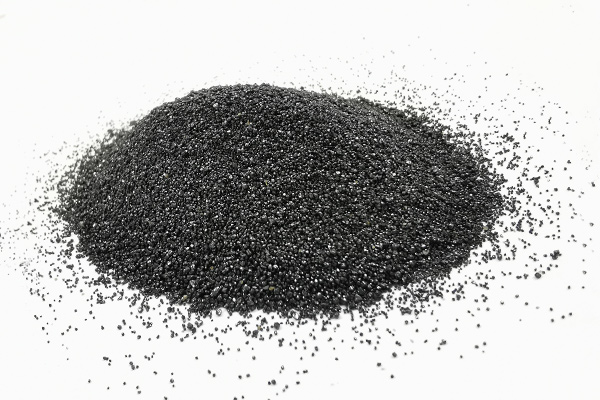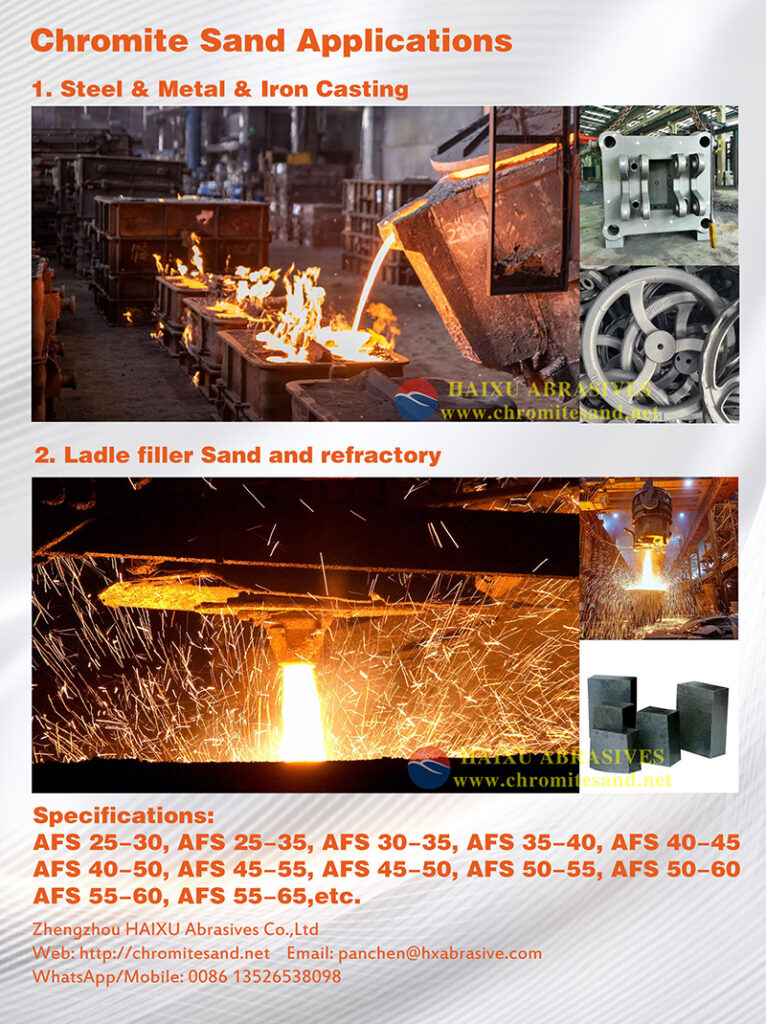Chromite sand advantge and usage
Chromite ore is a naturally occurring mineral in the form of iron-chromium oxide FeCr2O4. South African chromite has all the above elements Mg-Al and Fe chromite MgFe (Al-Cr) 2O3. There are several types of Chromite sand such as metallurgical grade chromite, casting grade chromite, and chemical grade chromite after chrome ore get mined. One-third of the world’s chromite reserves are in South Africa. The LG layer of South African chromite has a high grade with a chromium content of 45-46%. This type of chromite sand is suitable for casting and refractory materials.
Chromite sand is a natural ore. However, chromite sand used as casting sand, drainage sand, and refractory aggregate has high requirements for indicators such as sediment content, moisture content, acid consumption value, and particle size distribution. It is necessary to take production process to get.
The production process of chromite sand including:
Mining, crushing, washing, drying, screening, magnetic separation, fine screening, inspection, and storage
The advantages of Chromite sand:
- Cr2O3 content is greater than 46%, and SiO2 content is less than 1%. The control of silicon content is conducive to the chromite sand to play the anti-sticking sand and drainage sand anti-sintering properties of casting.
- The chromite sand has low mud content and low moisture content. That is conducive to the refractory properties of chromite sand.
- High refractoriness. High temperature resistance will help maintain the chemical stability of the molding sand when the molten steel is poured.
- Good alkaline slag resistance and stable high temperature performance.
- The wetting angle of chromite sand to molten steel is large. This makes it have good anti-wetting properties to molten steel. Chromite sand does not react with molten steel. During the investment casting process, the chromite itself undergoes solid phase sintering. Thus, it prevents the penetration of molten metal and does not produce chemical sticking sand.
- The thermal conductivity of chromite sand is better than other foundry sands. This characteristic of chromite sand can increase the cooling rate of molten steel. On the one hand, it prevents chemical reactions at high temperatures. So the casting will fall off the shell and it is easier to clean the surface of the casting. On the other hand, it also increases the solidification process of molten steel. It will make the steel castings have fewer shrinkage cavities and pores.
- Low thermal expansion coefficient. This characteristic of casting chromite sand will help increase the unformed defects on the castings.
- The particle size of chromite sand is screened strictly according to the AFS standard. The specifications of chromite sand produced by the above process are: 20-40#, 20-50#, 20-60#, 20-70#, 30-70#, 40-70#, 50-100#, 70-140#.
After screening, the chromite sand has a certain particle range. That makes chromite sand suitable for large range of usage:
Surface sand and molding sand for casting processes such as molding sand casting, furan resin self-hardening sand, water glass resin sand.
Coated sand casting.
Core sand for shell casting.
Casting sand for large thick-walled castings, high manganese steel with high pouring temperature, and alloy steel castings.
Molding sand and core sand for small and medium-sized castings such as stainless steel, carbon steel, high chromium carbon steel, and manganese steel.
Raw material for drainage sand at the ladle nozzle.
Refractory aggregate. Used to produce various shaped refractory materials.

















